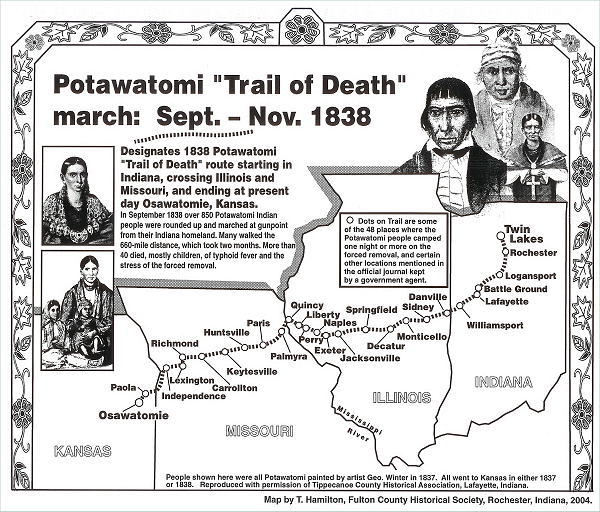Purdue’s campus occupies traditional homelands of the Bodéwadmik (Potawatomi), Lenape (Delaware), Myaamia (Miami), and Shawnee peoples, who are the original Indigenous caretakers of the land.
White settlers forced most Indigenous people out of Indiana after the federal government passed the Indian Removal Act of 1830. In 1838, for example, Indiana’s governor ordered a militia to burn a Potawatomi village, home to 859 people, and march them at gunpoint to a reservation in Kansas. In this forced removal, called the Potawatomi Trail of Death, militia members killed 28 children and 14 adults.

Purdue is also a land-grant university. In 1865, the federal government gave the state of Indiana 380,000 acres of land, spread across states ranging from Michigan to Montana. The U.S. had taken that land from Indigenous people by treaty, coercion, or violence. Per the Morrill Land-Grant Act of 1862, this gift of Indigenous land came with the obligation to establish a university teaching agriculture, the mechanical arts, and military tactics.
The state of Indiana sold the gifted Indigenous land and used the proceeds to endow Purdue with $340,000 in 1874. Adjusted for inflation and assuming investment at a 4% annual rate of return, $340,000 in 1874 translates to about $3 billion in 2023. Purdue’s total endowment is currently $3.7 billion.
This High Country News article and the associated data repository have more information on the history of land-grant universities and Indigenous peoples.
Purdue’s Native American Educational and Cultural Center supports students from Indigenous backgrounds, who currently make up about 0.2% of the student body.